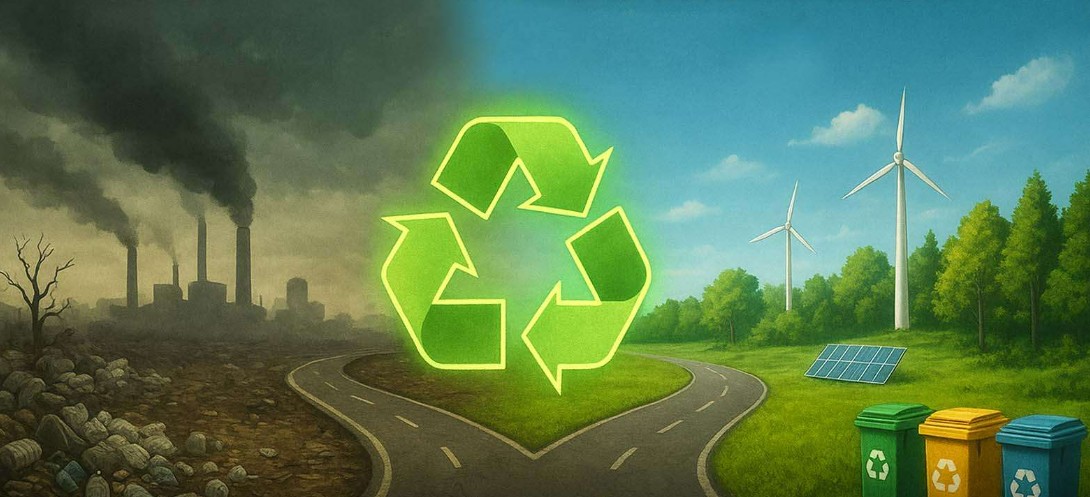Plastic waste has become one of the most common pollutants of our time and a dangerous element for ecosystems, people, and the planet as a whole. Plastic waste pollutes oceans and urban landscapes, causing environmental degradation. The combination of its high strength and long service life, extensive utility, and disposal without application of treatment has led to a worldwide environmental disaster impacting the terrestrial, freshwater, and marine ecosystems. Knowing how plastic quickly causes death to living things is really good to solve some problems that can pay attention to nature, as well as human living in harmony.
Ways Plastic Waste Results in Environmental Degradation
1. Persistent Pollution in Ecosystems
The durability of plastics is among the main causes that make plastic waste responsible for environmental degradation. Plastics decompose in hundreds to thousands of years, unlike organic materials. This durability, in turn, enables plastic waste to accumulate in rivers, oceans, forests, and even in remote locations, causing persistent pollution. Aquatic organisms, such as turtles, fish, seabirds, etc., frequently confuse plastics with food in aquatic systems. Plastic can cause blockages, injuries, or even death when ingested.
Plastic can also trap and damage coral reefs and mangroves, which are important habitats. Plastic waste is known to clog up the soil, limit natural water drainage and soil moisture on land, and affect vegetation growth.
2. Release of Toxic Chemicals
Plastics generally include toxins like phthalates, bisphenol A, flame retardants, and other contaminants. These chemicals can leach into soil, the rivers, and groundwater as plastics degrade over time. Plant, animal, and human contamination enters the food chain and exposes health risks, hormonal disorders, reproductive issues, and developmental disorders in children. Microplastics represent another danger. These microplastics absorb other environmental pollutants and, therefore, concentrate toxins and systematize them into the ecosystems.
3. Contribution to Climate Change
Plastic generation and waste are contributing to climate change, which is, in fact, a form of environmental degradation itself. A majority of the plastics are produced using petrochemicals derived from fossil fuels such as petroleum or natural gas. Using these resources produces carbon dioxide, methane, and other greenhouse gases into the air.
This becomes even more dire when plastic waste is not disposed of correctly. Not only does it release poisonous gases, but burning plastics also releases greenhouse gases, while those slowly disintegrating in landfills release methane. It turns out that when considering the production, use, and disposal of plastic, it has a much larger carbon footprint than you might think—the latest of many factors that contribute to climate change and environmental destruction at an accelerated pace.
4. Effects on Soil Quality and Farming
Plastic waste that is improperly disposed of in landfills or into the land can also penetrate soil quality. Plastics that cannot be naturally broken down by the environment in which they live can form large clumps and block the movement of natural water and nutrients through the soil, causing the soil to be less fertile and making it more difficult for plants to grow. Additionally, the chemicals leached from plastics can alter the pH of the soil and disrupt the activity of soil microorganisms, which are essential to the functioning of healthy ecosystems.
A reduction in soil quality significantly affects agriculture. Sporadic fertility decreases crop productivity, which will need more dependence on chemical fertilizer and thus more potential to contaminate the environment. Such practices degrade lands over time to a wasteland, thus illustrating the linkage between plastic waste and land degradation, which jeopardizes food insecurity.
5. Threats to Wildlife and Biodiversity
Among the results of plastic waste, it contributes to global environmental degradation, plastic waste harms wildlife, and as such, is probably the most regrettable. Common impacts to animals include attempting to ingest plastics or being entangled with plastic, resulting in significant injury or death. While marine life is the most endangered by plastic, animals on land are also affected when plastic starts to accumulate in forests, rivers, and wetlands.
6. Economic and Social Impacts
Plastics are a threat to ecosystems, but they also hurt economies and human communities. Plastic pollution has repercussions for tourism, fisheries, and agriculture. At the same time, the economic value of tourism decreases because of beach strewn with plastics, polluted rivers, and reduced ground means reduced production and agricultural fields. The streams and rivers and the expanded landfills where their trash goes poison the health of communities, such as through drinking water contamination and air pollution from burning plastic waste.
What Challenges Occur in Plastic Waste Management?
One of the reasons that plastic waste remains a top contributor to the global environmental crisis is the global context of waste management. Still, many places do not have proper infrastructure to collect, recycle, or dispose of them. Even where recycling infrastructure has been implemented, it is often ineffective or under-monitored, allowing plastics to enter our environment instead of being recycled.
It requires infrastructure investment, awareness creation, and policy bandwidth for sustainability. Methods to protect against plastic-induced biophysical degradation include reducing the consumption of single-use plastics, broad producer responsibility programs, and the circular economy.
How to Resolve the Problem of Plastic Pollution?
Banyan Nation, one of India’s largest plastic recyclers, is addressing this issue by turning plastic waste into high-grade recycled materials. The company aims to facilitate and accelerate the recycling of plastic so as to contribute to reducing the natural resources used and the polluting effects of plastic toxins. By partnering with Banyan Nation, you can also help provide ethical recycling and opt for sustainable alternatives that will greatly reduce the negative impact of plastic on the environment.
Final Words
Plastic waste has been one of the most significant contributors to environmental degradation, impacting ecosystems, wildlife, human health, and the global climate. The presence of plastics in places across the globe, their role in pollution generation, their contribution to greenhouse gas emissions, and their consequences for soil and biodiversity embody the environmental crisis.
The environmental pollution will need to be addressed through sustainable consumption, rather than progressive waste disposal, and sustainable disposal measures, such as the restriction of single-use plastic and advanced recycling technologies. Companies like Banyan Nation prove that systemic solutions that bring waste plastics back into valuable use while damaging the planet less are indeed possible. Only by acting individually, collectively, and systemically can we contribute to tackling plastic pollution and safeguarding our planet for future generations.






